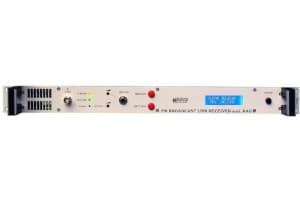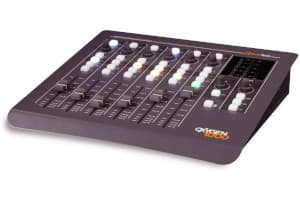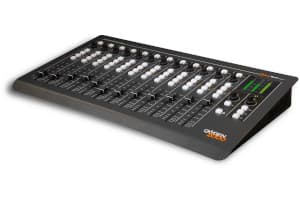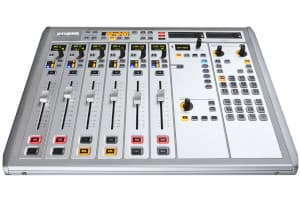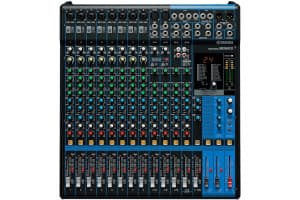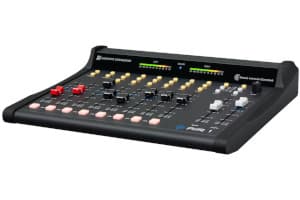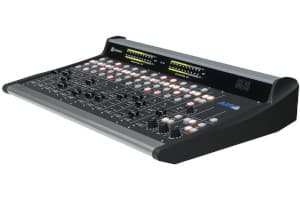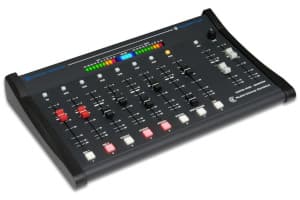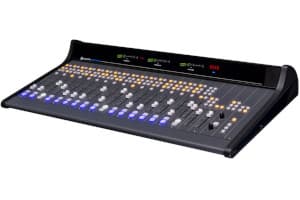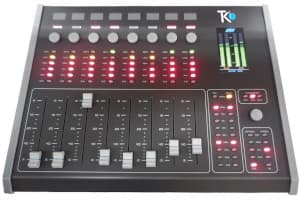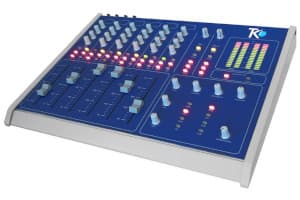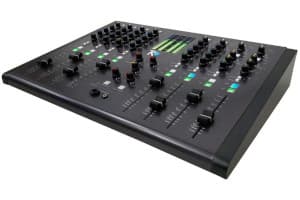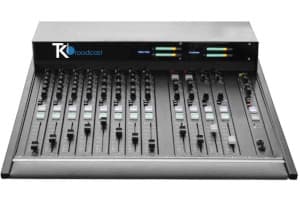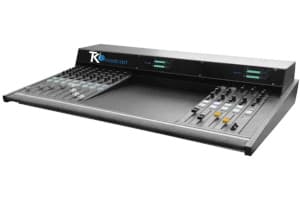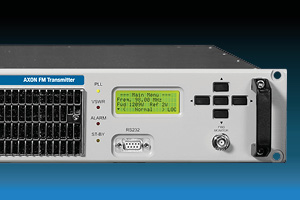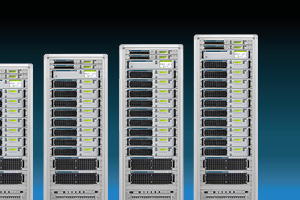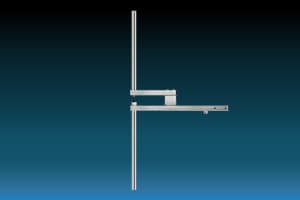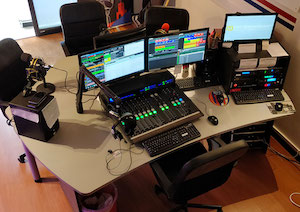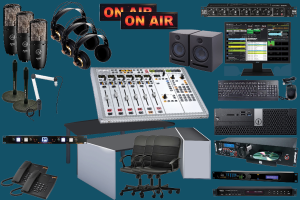Radio Mixer Broadcast Console
for FM Radio Studios
Unique Audio Sound Quality
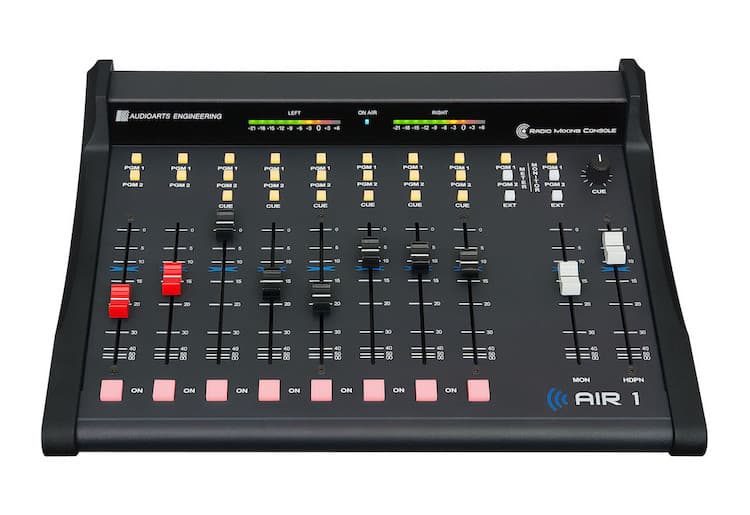
Audio Mixing Consoles for Broadcast or Studio, Analog and Digital
A mixing console is an essential purchase on the road to building a Radio
Studio.
The Audio Mixer Console is often called mixing desk or broadcasting desk.
It is the heart of the studio: it’s used to control
anything that the listeners hear on air. There is an input for every
channel.
Main features of a Broadcast Mixer Console
A broadcast mixer console, also known as an audio mixer or mixing console, is a piece of audio equipment used in the field of broadcasting,
music production, and live sound reinforcement. Its primary purpose is to control and manipulate audio signals from various sources,
such as microphones, musical instruments, and playback devices, and combine them into a coherent audio output.
Broadcast mixer consoles play a crucial role in achieving high-quality audio production in radio and television broadcasting,
as well as in live events like concerts and theater performances.
The slider on the audio console amplifies the incoming signal from a
variety of sources; it mixes them and routes them to a unique output.
The Mixer Console allows a seamless transmission, without a break switch from a
computer, a Turntable and/or CD player, Microphone and a Hybrid Phone
input; smoothly, without interruption – and it will consistently produce
the audio that you expect.
Broadcast Radio Audio Consoles are classified into two types:
- PA (public address), Live Mixers Sound designed for Musician Studios or Live applications
- Broadcast Radio Consoles designed specifically for on-air talent ease of use.
When you turn a microphone on or off, a Broadcast Radio Console will mute any speakers and light an “on-air” sign. When you turn a CD Player, Phone or Computer channel on, it will often “trigger” that input so as to start playing immediately.
Should I buy an analog or a digital audio mixer console?
While Analog audio consoles have the physical audio flow directly through
the console’s circuitry, many radio stations now use Digital audio
consoles.
Digital Audio Consoles are actually a remote control for a Mix Engine
(often located in the rack room).
Directing to a Studio or to a PA
Live sound Mixer, using an Analog or a Digital Professional Broadcast mixer
console ultimately depends on your budget.
What is the best audio mixer you can buy?
Here are a few things to take into account, if you're planning to buy a mixer console.
Are you interested in a PA Live sound mixer?
One of the best for beginners is the Behringer 802, for around €100. One
step up is the Behringer DX2000USB, which offers more features and inputs.
Within the same price range (€250.00/€350) there are many good products: Mackie
PROFX8 V2 Mixer, Behringer XENYX 1202FX or BEHRINGER XENYX 1204USB.
Are you oriented towards a Broadcast Mixer Console?
Broadcast Audio Mixers, Broadcast Audio Consoles, Mixing Consoles, Radio
Mixers, Digital Consoles, Digital Mixers or Digital Broadcast Mixing Consoles,
ON-air Broadcast Consoles.
There are many ways to name them but all of them carry the same meaning: to
get all the functions needed for an ON-AIR radio shows with specific
Broadcast functions.
There is a wide range of choice between manufactures, models and prices.
They can be Digital or Analog (the most popular), compact or Modular –
where it is possible to choose how many modules to add and what type.
The Digital Mixer is a completely digital system. It runs audio over IP,
which means that nothing is connected to the mixer directly. Instead, everything
is plugged into the mix engine.
The console itself is just a control
centre for each channel, so it's easy to move around without pulling on
any cables.
The typical features of Broadcast Consoles are:
- All Balanced inputs and outputs
- N channel inputs
- 1 o more Telephone Hybrids integrated inputs telephone opto-coupled
- A/B input control
- Good quality Sliders
- Mono inputs for Microphone
- N Stereo Lines inputs
- N Digital AES/EBU input
- Two or three band or equalizer tone control on all input channels
- Meeting function on telephone hybrid
- N Independent Balanced Analog Stereo Outputs
- N Independent Digital AES/EBU Outputs
- Control Room and Studio functions with monitor mode selector & with mute logic
- Internal USB Audio Board for extra versatility connection
- Output opto-coupled command
- Shielded buses
- Stereo Led Meters
- Remote fader function
- Bluetooth Inputs
There are many manufacturers, all with optimum quality and specification; some of the most popular are: DM Broadcast, AEV, AXEL, Audio Art, Studer, D&R, AEQ, AXIA, Arrakis and more.
Some popular models are:
- AEV-BSM Evo USB
- AEV-ACUO908
- AEV-ACUO912
- DM-M8
- DM-M16
- AXEL-Oxygen 3000D
- Studer-1500 12F
- Studer-1500 6F
- Audio Art-AIR 1
- Audio Art-AIR 4
- Audio Art-AIR 5
- D&R AIRLITE-USB 8
- D&R AIRMATE-USB 8
- D&R AIRMATE-USB 12
- Arrakis ARC-8
- Arrakis ARC-10UP
